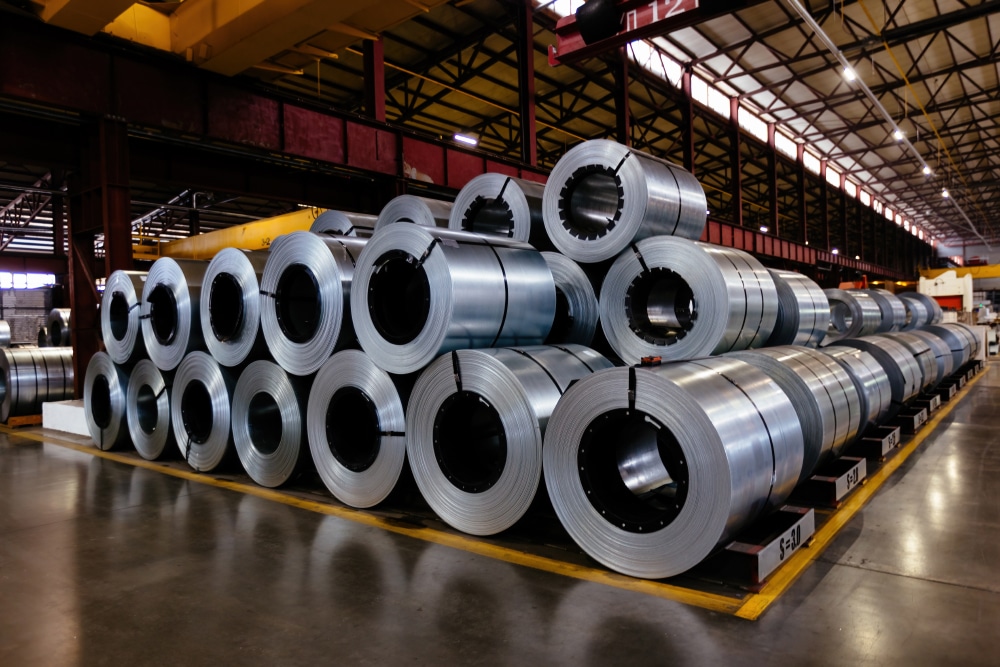Raw Steels MMI: U.S. Steel Prices Slide as Construction Sector Poses Long-Term Risk

The Raw Steels Monthly Metals Index (MMI) moved down from April to May as all its components declined. After sharp upside movement during March, flat rolled steel prices saw their four-month uptrend falter throughout April. Meanwhile, hot rolled coil prices had risen over 82% from the beginning of the early December uptrend until prices peaked on April 14. Plate prices continued to behave inversely to their flat-rolled counterparts. After almost a year of slowly edging downward, prices traded up during April, pushing plate to its highest point since December.
Never second guess your steel buying decisions again. Request a free demo for MetalMiner’s versatile metal price and forecast platform, MetalMiner Insights.

U.S. Construction Spending Rises in March Ahead of Peak Construction Season
Despite building demand headwinds, U.S. construction spending rose in March. According to the U.S. Census Bureau, total spending beat market expectations with a 0.3% rise from February. While residential construction remained weak, both private and public spending posted overall increases during the month. Altogether, the former rose 0.3% while the latter rose 0.2% month-over-month.
Construction spending remains the leading driver for domestic steel consumption. Therefore, March’s increase provided support for greater steel demand. The peak season for construction in the U.S. typically extends from May to September, so spending may offer continued support in the coming months.
Are you under pressure to generate steel cost savings? Make sure you are following these five best practices.

Commercial Construction Sector Poses Risk to Steel Demand
U.S. infrastructure spending has supported and will continue to support the construction sector. However, public spending represents only around 22% of total construction expenditures in the U.S. And though private spending also rose during March, it continues to show increasing weakness. The issue began this time last year and continues to put a drag on total spending. Meanwhile, public and private spending could become increasingly bifurcated amid increasing demand headwinds. On top of the already apparent weakness in residential construction, a recent report from Morgan Stanely suggests a looming threat from the commercial sector.

According to the report, commercial real estate faces a significant “refinancing wall.” Indeed, more than half of the $2.9 trillion in commercial mortgages is up for refinancing in the next couple of years. Even if the Federal Reserve does opt to pause rate hikes after its most recent 25-basis-point increase, new lending rates are still likely to be 3.5 to 4.5 percentage points higher than existing rates. Commercial property prices have already turned downward, dragged, in part, by the shift toward remote work. However, many of those former office spaces are not easily convertible for other purposes. As a result, commercial property prices could fall as much as 40%, rivaling the decline during the 2008 financial crisis.
These kinds of challenges would not only impact the real estate sector, but would have knock-on effects for industrial metal demand. While it may occur over years, such a collapse could add significant weight to overall steel demand.
Discover what else impacts U.S. steel prices and generate hard savings on your metal buys year-round. Trial MetalMiner’s monthly outlook report.
Correlation Eroding Between HRC Steel Prices and Plate Prices
Amid the ever-evolving macroeconomic landscape, U.S. steel markets appear increasingly decoupled. While hot rolled coil, cold rolled coil, and hot dipped galvanized steel prices continue to move largely in tandem with one another, plate prices appear increasingly idiosyncratic.
The correlation between HRC prices and plate steel prices surpassed 93% at its highest. However, throughout 2022, the correlation between the two forms of steel to erode substantially. Indeed, it now sits at just 78%. The reasons for this include a higher degree of overall volatility throughout last year and the sharp downside movement of HRC prices as they retraced from their all-time high. Considering the disproportionate impact that public spending will have on the plate market, this trend appears unlikely to resolve itself in the near future.

The decoupling of the two markets will have several consequences for buyers. For one, purchasers can no longer use price direction for one market as a leading indicator for the other. In years past, an apparent trend reversal for one might suggest that the other would soon follow. Secondly, the substantial delta between the two prices leaves strong opportunities for substitutions. Although plate steel prices historically carried a $179/st premium over HRC, the spread has widened to $504/st. Moreover, plate prices remain stubbornly high. As they still sit near their last-April peak, HRC prices show increasing weakness. This supports the substitution of steel plate for thicker grades of HRC.
Interested in understanding how correlations can give buyers a competitive edge? Join MetalMiner’s May interactive May chat “How to Use Unconventional Cost Reduction Tools.” In this discussion, we dispel commonly held correlational myths, while also diving into how to use strong correlations to help drive savings. Opt-in for free here.
Biggest Moves for Raw Materials and Steel Prices
- Following a sharp rise during March, U.S. shredded scrap prices edged downward during April. Prices fell 1.38% to $501 per short ton as of May 1.
- Meanwhile, Chinese HRC prices traded down, as they dropped 8.4% to $585 per short ton.
- LME primary 3-month scrap prices fell 11.64% to $387 per metric ton.
- Midwest HRC future prices saw a 15.96% decline to $848 per short ton.
- Finally, Chinese coking coal prices saw the largest drop within the Raw Steels Index, falling 18.4% to $317 per metric ton.


Leave a Reply